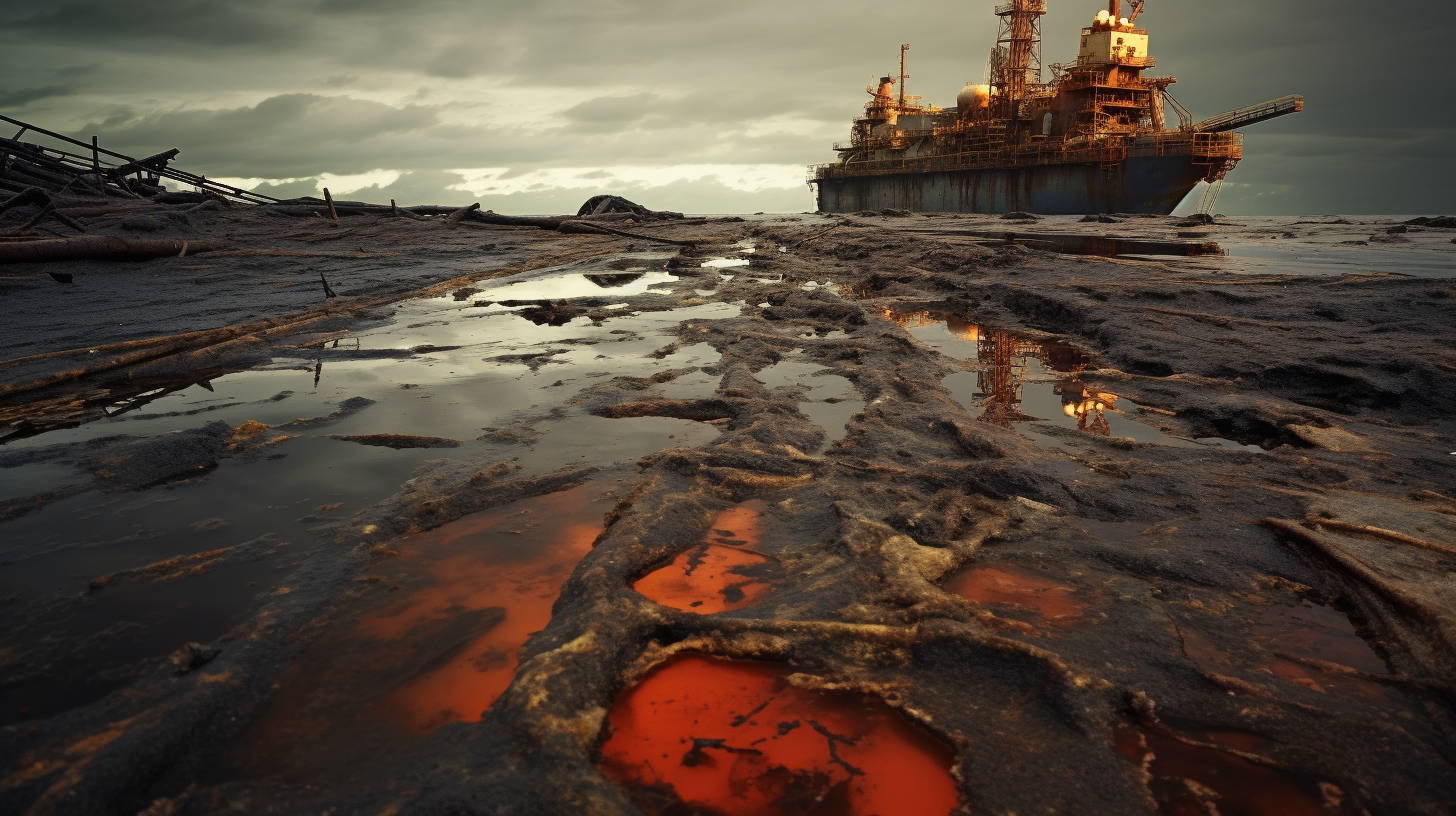Imagine a world where the blue shimmering seas of the past have been replaced by viscous, gray waves, foaming angrily as they lap at eroding shores. This is not the opening line of a dystopian novel; it is the reality of our acid seas.
In this desolate watery landscape, the invisible menace known as ocean acidification holds sway, the offspring of our long-standing affair with fossil fuels. The seas have absorbed about one-third of human-generated CO2, altering their very essence. The result? A corrosive cocktail that is relentlessly dissolving the future of marine life.
Coral Graveyards
Walk with me through the silent graveyards once teemed with life; the coral reefs. The architects of these vibrant ecosystems, the corals, are among the first casualties in our acidifying oceans. As they succumb to the ‘osteoporosis of the sea’, we don’t just lose their magnificent splendor; we witness the collapse of marine biodiversity as countless species lose their homes and sources of nourishment.
Shell Shock
It’s not just the corals that suffer. Shellfish populations, the backbone of many marine food webs, reel under the impact. Their weakened, malformed shells are testament to the changing chemistry of their habitat, a stark reminder that our carbon sins are catching up with us, disrupting life cycles that have persisted for millennia.
Disappearing Acts
The acidic seas don’t discriminate. From the smallest plankton to the mightiest whales, no creature is safe. Entire species are performing vanishing acts, slipping away from existence, leaving behind an imbalance that reverberates through the food chain. In this macabre performance, the consequences are not just confined to the deep blue but ripple towards land and society. Fisheries dwindle, food security is threatened, and livelihoods sink.
A Ripple in Time
But is anyone truly watching? The drama unfolds far from human eyes, beneath undulating waves that tell no tales. Acidic whispers are drowned out by the cacophony of daily life – until the ocean’s breath, once full of life-giving oxygen, becomes a suffocating gasp.
In the wake of our previous exploration of the marine tragedy through ‘Seas of Garbage’, we dive deeper into the waters only to find a reality more acidic and bleak. The garbage festers in an acerbic soup, where plastics and acid custodianship form a dystopian harmony.
A Glimpse of Salvation
Alas, in this relentless tide of decay, are there no safe harbors? The explorers of this new, harsh frontier cling to a sliver of hope. Ingenious methods to combat acidification are emerging. Scientists scramble to breed resilient species while innovating carbon capture techniques that could one day rebalance the marine equation.
Yet, the odds are grim. These attempts are but whispers against a roaring tempest of neglect and irresponsibility. In this world, marked not by the birth of new life but the expectant hush of extinction, the struggle appears Sisyphean.
Conclusion: Navigating the Corrosive Future
So here we float, on the brink, gazing into the abyss that confronted us with grotesque reflections of our own doing. ‘Acid Seas – Navigating the Corrosive Future’ is not a story of redemption but a somber chronicle of what awaits. As we drift on these caustic currents, the question is not when the seas will heal but whether humankind will awaken to stanch the wounds it has inflicted. Our legacy, written on the waves, will be a testament to our recklessness or our awakening.
Through this vivid journey, if not to hope, then let it lead to action. To change. Because, even in a world where hope seems as dissolved as the shells on the seabed, awareness is the beacon that guides the lost ships. And, perhaps, it’s the one thing that might still make a difference.
